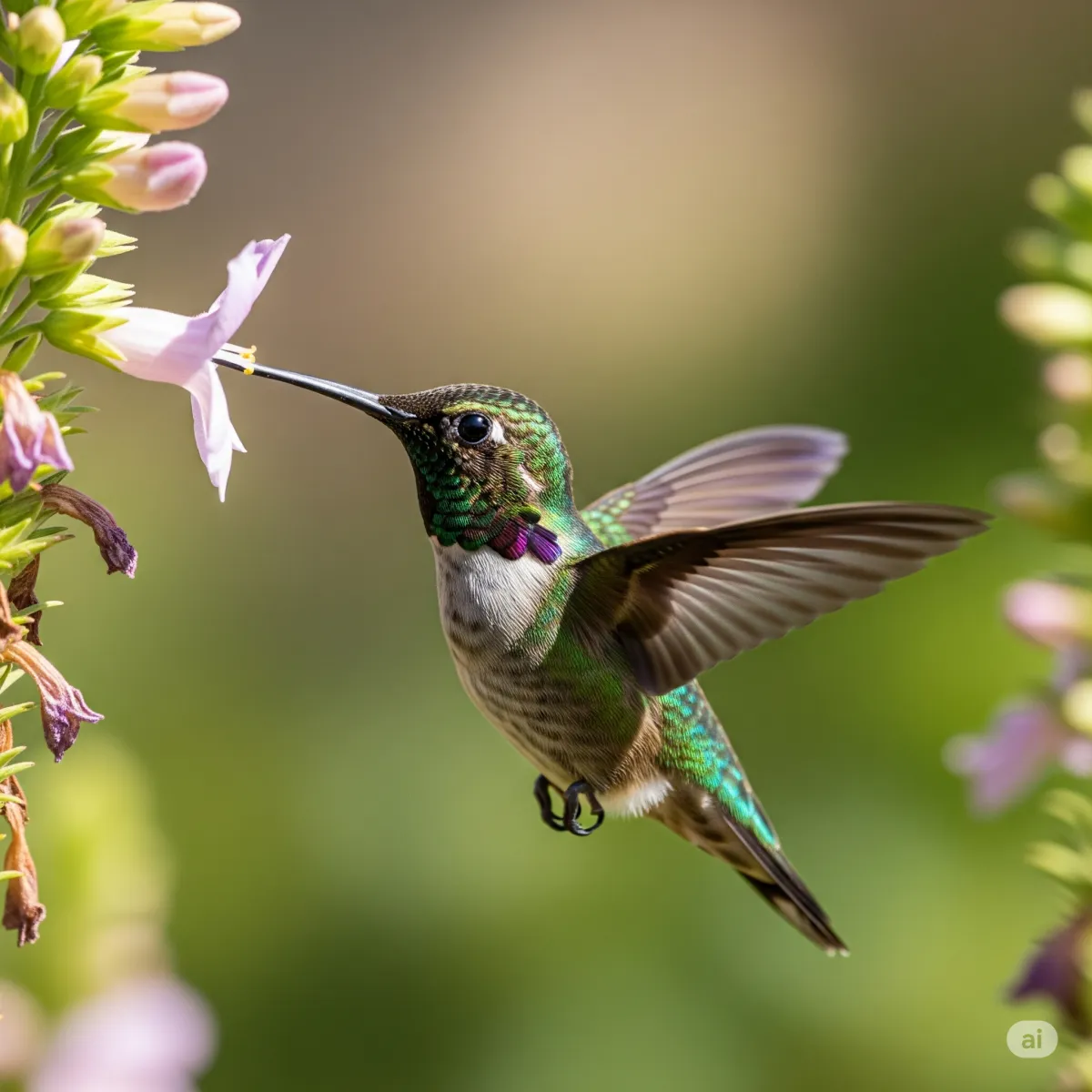A Rainbow of Roles - An Expanded Exploration of Avian Diets and Feeding Adaptations

A Rainbow of Roles - An Expanded Exploration of Avian Diets and Feeding Adaptations
The incredible diversity of birds extends far beyond their flight styles. Their diets and the methods they use to obtain food are equally varied and fascinating. From the specialized beaks of hummingbirds to the hunting prowess of eagles, avian feeding adaptations are a testament to the power of natural selection in shaping their morphology and behavior. In this part, we'll delve deeper into the intricate world of bird nutrition, exploring the remarkable range of avian diets and the ingenious adaptations that allow them to thrive on a wide array of food sources.
Beak Morphology: The Ultimate Dining Tool
Perhaps the most obvious and informative indicator of a bird's diet is the shape and size of its beak, also known as its bill. Over millions of years, evolution has finely tuned beak morphology to match specific feeding habits with remarkable precision. The beak is not just a simple appendage; it's a highly specialized tool, perfectly designed for the task at hand.
Seed-Crushing Beaks:
The Nutcrackers of the Avian World: Birds like finches, sparrows, and grosbeaks have short, stout, and powerful beaks designed for cracking open tough seeds. These beaks act like nutcrackers, providing the leverage needed to access the nutritious kernels inside.
Insect-Catching Beaks:
The Aerial Acrobats of the Insect World: Swallows, flycatchers, and nightjars possess wide, flattened beaks that can be snapped shut with incredible speed and precision to capture flying insects. These beaks often have bristles along the edges, acting like a net to increase their capture efficiency.
Nectar-Sipping Beaks:
The Key to Floral Treasures: Hummingbirds have long, thin, and often curved beaks perfectly suited for reaching deep into tubular flowers to extract nectar, a sugary energy source. These specialized beaks are often accompanied by long, extendable tongues that act like tiny siphons.
Fruit-Eating Beaks:
The Gourmands of the Forest Canopy: Toucans and parrots have large, strong, and often colorful beaks used for reaching and crushing fruits. These beaks are not only powerful but also highly maneuverable, allowing them to access fruits in even the most challenging locations. While primarily frugivores, some may also supplement their diet with seeds or insects.
Raptorial Beaks:
The Weapons of the Skies: Birds of prey, like eagles, hawks, and owls, possess sharp, hooked beaks designed for tearing flesh. These powerful beaks are essential for dismembering their prey, allowing them to consume it efficiently.
Filter-Feeding Beaks:
The Sieves of the Waterways: Ducks, geese, and flamingos have specialized lamellae (comb-like structures) along the edges of their beaks that allow them to filter small food particles, such as algae, plankton, and invertebrates, from water. These beaks act like sieves, straining out the edible material while allowing the water to pass through.
Probing Beaks:
The Explorers of the Mudflats: Shorebirds, like sandpipers, plovers, and avocets, have long, slender, and often flexible beaks used for probing in mud and sand for invertebrates, such as worms, crustaceans, and insects. The length and shape of their beaks are often correlated with the depth at which they forage.
Diverse Diets and Hunting Strategies: A Symphony of Feeding Behaviors
Carnivores: The Apex Predators of the Avian World: Birds of prey are the carnivores of the avian world, hunting and killing other animals, from small mammals and birds to fish and reptiles. They use their sharp talons to capture and kill their prey and their powerful beaks to tear it apart. Owls, with their exceptional hearing and silent flight, are masters of nocturnal hunting.
Insectivores: The Tiny Hunters: Many birds rely on insects as a primary food source, employing a variety of techniques to catch them. Swallows and flycatchers are aerial insectivores, catching insects on the wing. Woodpeckers glean insects from tree bark, while warblers search for them among leaves.
Frugivores: The Seed Dispersers: Fruit-eating birds play a crucial role in seed dispersal, helping to maintain plant diversity in their ecosystems. By consuming fruits and then depositing the seeds in other locations, they act as mobile gardeners.
Nectarivores: The Pollinators of the Avian World: Birds that feed on nectar, like hummingbirds and sunbirds, are important pollinators for many plant species. As they move from flower to flower, they transfer pollen, facilitating plant reproduction.
Granivores: The Seed Eaters: Seed-eating birds are a crucial part of many terrestrial food webs, consuming seeds as a primary food source.
Omnivores: The Adaptable Generalists: Some birds have a more generalist diet, consuming a variety of foods, including insects, fruits, seeds, and even small animals. Crows and gulls are examples of highly adaptable omnivores, able to thrive in a wide range of environments.
Scavengers: The Clean-Up Crew: Vultures play a vital ecological role by feeding on carrion (dead animals), helping to prevent the spread of disease.
Fishing Birds: The Aquatic Hunters: Birds like kingfishers, herons, and pelicans have developed specialized techniques for catching fish. Kingfishers dive headfirst into the water, while herons patiently stalk their prey from the water's edge. Pelicans use their large pouches to scoop up fish.
The intricate relationship between a bird's diet and its physical adaptations highlights the remarkable power of natural selection in shaping the avian world. Each beak, each hunting strategy, is a testament to the evolutionary pressures that have driven birds to exploit a remarkable array of food resources, contributing to the incredible diversity and ecological importance of this fascinating group of animals.